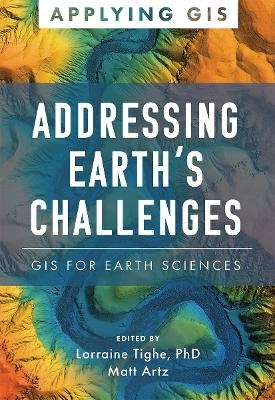
Addressing earth's challenges
GIS for earth sciences
Seiten
2023
|
1. Auflage
ESRI Press (Verlag)
978-1-58948-752-9 (ISBN)
ESRI Press (Verlag)
978-1-58948-752-9 (ISBN)
Addressing Earth’s Challenges: GIS for Earth Sciences explores a collection of real-life stories about how earth science organizations successfully use GIS to visualize and analyze data.
Discover The Geographic Approach to enabling science for a more exceptional planet.
Place matters to governments and citizens, and location intelligence and data science have never been more critical for smarter national decision-making. Addressing Earth’s Challenges: GIS for Earth Sciences explores a collection of real-life stories about how earth science organizations successfully use geographic information systems (GIS) to visualize and analyze data to streamline workflows, gain competitive insight, drive decision-making, design efficient operations, and foster civic inclusion.
Find out how multiple organizations implement GIS in six scientific fields:
geoscience,
sustainable energy,
environmental monitoring,
climate science,
weather, and
marine science.
The book also includes a section on next steps that provides helpful ideas, strategies, tools, and actions to help jump-start your use of GIS for earth sciences. A collection of online resources, including additional stories, videos, new ideas and concepts, and downloadable tools and content, complements this book.
Discover The Geographic Approach to enabling science for a more exceptional planet.
Place matters to governments and citizens, and location intelligence and data science have never been more critical for smarter national decision-making. Addressing Earth’s Challenges: GIS for Earth Sciences explores a collection of real-life stories about how earth science organizations successfully use geographic information systems (GIS) to visualize and analyze data to streamline workflows, gain competitive insight, drive decision-making, design efficient operations, and foster civic inclusion.
Find out how multiple organizations implement GIS in six scientific fields:
geoscience,
sustainable energy,
environmental monitoring,
climate science,
weather, and
marine science.
The book also includes a section on next steps that provides helpful ideas, strategies, tools, and actions to help jump-start your use of GIS for earth sciences. A collection of online resources, including additional stories, videos, new ideas and concepts, and downloadable tools and content, complements this book.
Lorraine Tighe is director of earth sciences solutions at Esri. Matt Artz is a principal content strategist for Esri Press.
Introduction
Part 1 – Geoscience
Part 2 - Sustainable Energy
Part 3 - Environmental Monitoring
Part 4 - Climate Science
Part 5 – Weather
Part 6 - Marine Science
Next Steps
| Erscheinungsdatum | 20.12.2023 |
|---|---|
| Reihe/Serie | Applying GIS |
| Zusatzinfo | Illustrationen |
| Verlagsort | Redlands |
| Sprache | englisch |
| Maße | 139 x 203 mm |
| Themenwelt | Naturwissenschaften ► Biologie ► Ökologie / Naturschutz |
| Naturwissenschaften ► Geowissenschaften ► Geografie / Kartografie | |
| Naturwissenschaften ► Geowissenschaften ► Geologie | |
| ISBN-10 | 1-58948-752-4 / 1589487524 |
| ISBN-13 | 978-1-58948-752-9 / 9781589487529 |
| Zustand | Neuware |
| Haben Sie eine Frage zum Produkt? |
Mehr entdecken
aus dem Bereich
aus dem Bereich


